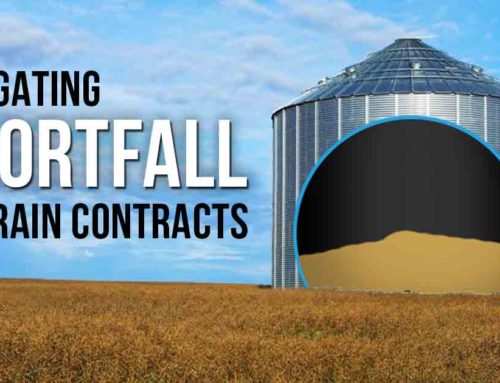What’s your process for buying seed?
It should be more than just getting your seed salesperson on the phone once a year to make an order. Greg Stamp is the Seed Sales Manager for Stamp Seeds, a family-run seed farm in Enchant, Alberta.
He says there are only three things he needs from farmers.
• Early Planning – Don’t leave your seeding decisions until just before you plant, even if its just to touch base on what’s new in that market class
• What are you thinking – new market class? variety? rates? treatments?
• What issues have you had – In terms of pests, weeds, or fungus
Stamp says they don’t have to come in a formal manner either for him to offer some suggestions and ultimately the right product as he often receives them via email, text, or phone.
Start a Year in Advance
It would be best to think ahead – a year ahead actually – before the planter rolls out into the field. It should have been a foregone conclusion by that point.
Stamp recommends working with your seed retailer the year before the crop goes in the ground.
If it’s the first time you’re working with a particular seed retailer, they’ll need some information to make a good recommendation.
“A good seed retailer is going to help you with the agronomics of getting a good crop, not just what variety is the best.”
Stamp says he always asks farmers for the following:
• Farming style – When do you want to take the seed home?
• What Kind of Fertility?
• What stubble is this crop going on?
• Yield Targets – What insecticides, or fungicides do you want to apply?
• Plant Population – How many plants per square foot are you targeting?
Stamp says farmers should always stay on top of what’s coming down the pipeline in terms of new varieties, and a great way of doing that is to get a first-hand look at field trials.
“If you’re looking at some of the varieties in the field and then looking at the harvest data and how they compared to the other variety, you can say you actually saw it.”
From there, you can figure out what makes sense and what varieties you should be watching for and growing.
Stamp says it builds a lot of confidence to get a first-hand look at the new variety because it allows you to know what it looks like compared to other varieties you already know.
On-going Conversation
The conversation with your rep shouldn’t stop once the seed goes into the ground.
Your rep will want to know how the variety is faring and will most likely want to show it off with a marketing sign and social media posts about its progress.
This will help them determine what would be a good fit next year based on what varieties are working this year and what will be new on the market in the coming years.
Stamp says you will see better results from the newer varieties when you have this on-going dialogue as when something new comes available they may know who it will be a good fit for.
“It takes us a few years to figure out all the attributes of a new variety and where and how it fits and how it grows because you know we might have access to it two or three years before commercial launch.”
He says it usually takes that long to figure out how it fits.
Markets
Your crop rotation might change with the markets; that’s why it is essential to keep in touch with your rep to make sure if you change plans last second, you’re getting the variety that fits your field conditions the best.
He says this year is a perfect example.
“There will be a lot of new barley and flax farmers; people are getting back into peas and lentils because they’re ok (price-wise).”
He says years like this with market swings seed growers typically sell more seed.
Conclusion
It is imperative to establish a relationship with your seed rep. They should know all about your farming style, soil fertility, yield targets, and your plant population goals to help you find the right seed to fit your needs.
“A good seed retailer is going to help you with the agronomics of getting a good crop, not just what variety is the best.”
Stamp says it is also crucial that farmers don’t get too reactionary when picking a variety.
He says sometimes producers come to him and want to make a change because there was a problem last year without looking at the three-to-five-year trends for that crop type.
The conversation between you and your seed salesperson should result in both parties gaining more information about your crops and the options before you.
As Stamp puts it, “More information is always better.”




